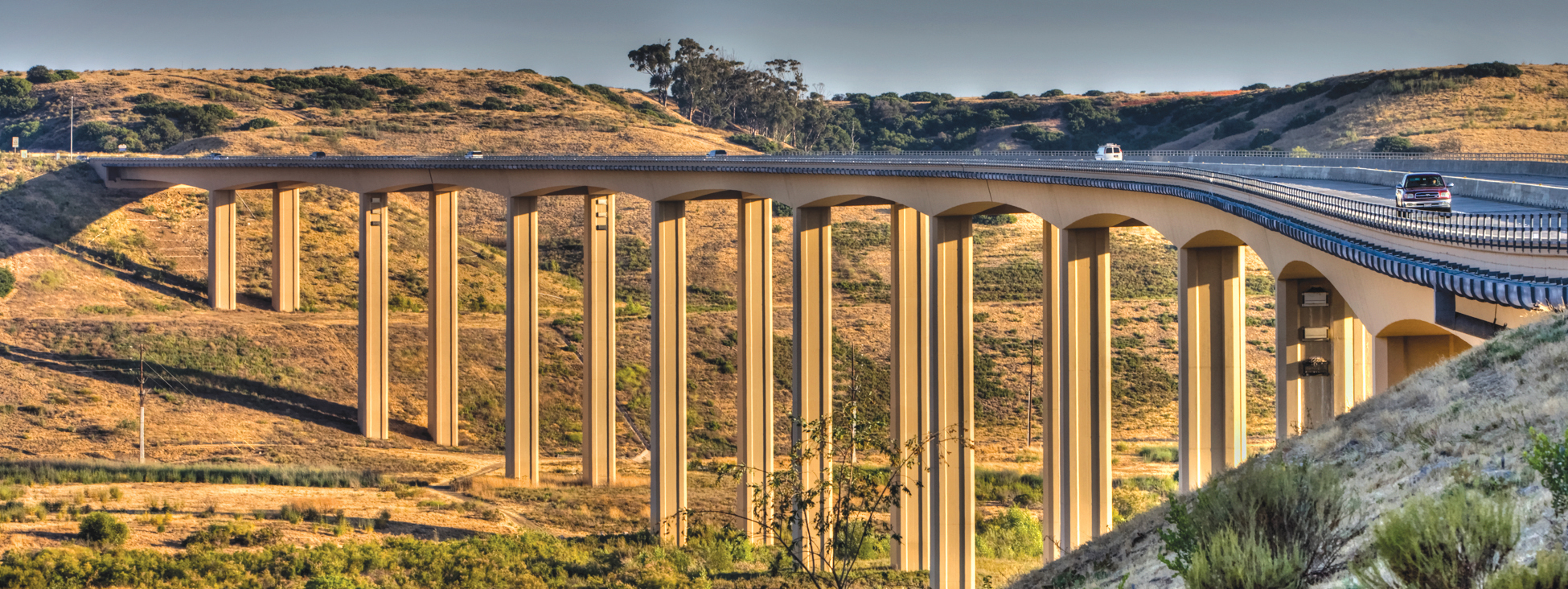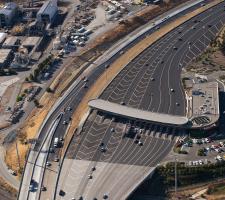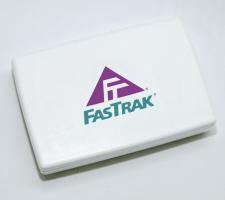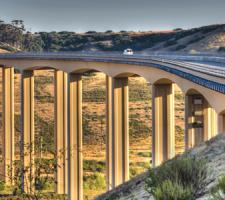
Saving the US State of California ‘millions of dollars’ in tolling infrastructure costs by encouraging new technologies is the professed aim of a legislative Bill, SB 242, which is currently moving through the State’s Senate (upper house) process. According to its sponsor, Republican State Senator Mark Wyland, permitting alternatives to the current FasTrak-branded radio-frequency identification (RFID)-based systems would increase revenues available for investment back into needed highway infrastructure.
Specifically, Wyland argues, funding tolling infrastructure with lower capital and operating costs would open the way to the wider implementation of high occupancy toll (HOT) lanes. He therefore wants to open the door for pilots of alternative approaches.
California’s toll systems all operate under the FasTrak brand, using a uniform transponder specification based on an open technology standard known as Title 21, which dates back to 1991. By specifying the technology requirements in fine detail it excludes newer products such as ISO-18000 6C RFID tags which interests California’s toll operators and is a current the focus of a drive for a US-wide standard.
The proposal envisages pilots of up to four years, starting 2014, with summary reports by June 2018 covering the technology’s effectiveness, market performance, congestion management results and any safety implications as well as obstacles to and opportunities for implementation.
Vendors of alternative technologies (which could include ANPR) would be responsible for all operational expenses incurred by the State or participating toll agencies. The Bill is needed to protect participating Californian toll operators from breaching State legislation for trialling non-Title 21 compliant technologies.
The California Departments of Transportation (
Prominent among industry backers is US-based
Interoperability issues
In summer 2012, theTexas and Oklahoma targeting a 2014 start for interoperability across State boundaries but although Californian’s toll operators have achieved in-State interoperability their systems are not interoperable in other States.
The scale of the challenges involved in implementing interoperability nationally could, in the opinion of industry stakeholders, make it impossible without public (federal) funding. Since SB 242 offers scope for pilot projects that don’t meet interoperability requirements, these could fall foul of the MAP-21 mandate. So to avoid putting California at risk, the Bill has been amended to prevent an agency undertaking a pilot that would result in reduction in US federal aid highway funds.
There has been industry concern about the short timeframe and speculation that the
Industry views
Representing California’s tolling industry is the toll Operators Committee (CTOC) which was set up to support in-State interoperability, help coordinate members’ activities and act as their advocate on legislative issues.Samuel Johnson, director of operations at CTOC member the San Diego Association of Governments, told
“We support maintaining interoperability and providing efficient and effective tolling infrastructure. We continue to collaborate with other operators across the country on a balanced and strategic path towards multi-national interoperability. Any pilot of new technology in California should take into account this bigger picture of the tolling industry while addressing operating needs for revenue protection and customer service.”
“We can see both sides of the SB 242 issue”, said Brian McNiff, vice-president of marketing at
He points out that, as well as Title 21 tags, in order to comply with MAP-21the Californian agencies would need to read ISO-18000 6C tags on vehicles coming in from other states like Colorado and Washington. “At the end of the day, RFID remains a very important tool for tolling operation.
“It would be a mistake to abandon it completely. Any pilot programme of alternative technology needs to include consideration of possible impacts on the overall agency cost of collection”.
“The industry is not married to 902-918 MHz RFID devices, though they are the predominant form of EFC technology currently used in the US. We would be generally supportive of SB 242’s approach - which is permissive, not a mandate - allowing folks to try other toll payment technologies at the manufacturer’s cost.”
He warns, however, of a significant impediment to the introduction of another system in the form of the sheer size of the US installed base of toll facility users with RFID devices – over 30 million tags. “How does one accommodate the introduction of another system without creating a seriously complicated multi-mode payment system that doesn’t raise the threat of missed reads (lost revenue to the toll agency) and/or greater complexity to the customer with the potential for double billing?
“Any new technology that serves to identify a vehicle on the roadway will still have to offer a means to complete the financial transaction. This is certainly achievable – but I am highlighting that it is not just a matter of technology”.
One issue for consideration in any new system is that of Southern California’s switchable tags that allow members of eligible carpools to gain discounts and express lane privileges by selecting the relevant settings. Prior to starting each trip, the driver sets the switch on the transponder to indicate the number of occupants in the vehicle. Compliance is monitored by dedicated
The Bay Area toll Authority expects to extend the scheme to its motorists prior to the 2015 expansion of its regional Express Lane network.
Title 21
In 1990, concerned at the prospect of individual operators introducing mutually incompatible EFC systems, the California State Legislature directed Caltrans to develop specifications and standards for all toll agencies in the State. This was to ensure that no vehicle owner would have to install more than a single on-board unit to use any scheme statewide.
In response, Caltrans produced open compatibility specifications for a two-way communications protocol for automatic vehicle identification AVI-based EFC statewide, using RFID. The resulting standard was chaptered into the California Code of Regulations as a technical law generally referred to as Title 21.
The legislation also appointed Caltrans as the monitoring authority for the resulting FasTrak system. Maintaining individual accounts is the responsibility of the respective agencies, which process pre-paid toll transactions in their own back offices and effect exchanges through the CTOC.















